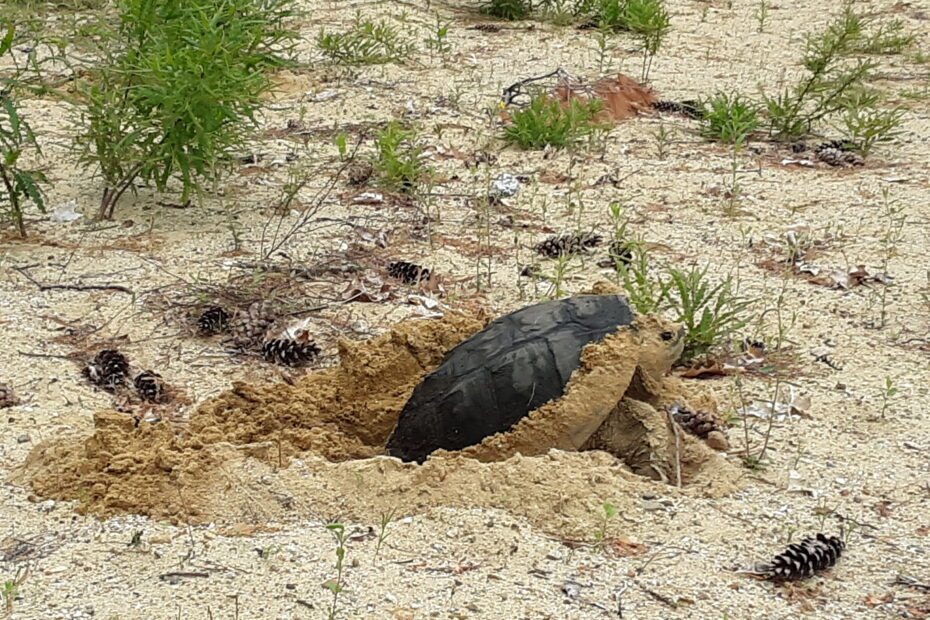Among the many species of wildlife seen at Beede Waste Oil Site, we have spotted several snapping turtles over the years. These reptiles can measure over a foot long and weigh up to 70 pounds. Their rough carapace, large head, and distinctive saw-like tail make them easy to identify, even from game camera footage. With Kelly Brook running along the site, Beede provides an ideal habitat for snapping turtles and, as it turns out, the rapid infiltration basin (RIB) with its coarse beach sand material is ideal for egg laying.
Last year, we discovered a nesting spot after it had been ransacked by predators – possibly a racoon or skunk – and all the eggs were destroyed. Knowing female snapping turtles typically return to the same area each year to lay eggs, we moved one game camera into the RIB, setting it up where there appeared to be an opening in the fence that turtles could crawl through. It just so happened that Keri Lauer, one of our environmental engineers, was heading to download footage from the camera when she spotted a snapping turtle digging her nest.
Snapping turtles can lay up to 40 eggs each year, typically nesting in soil banks, gravel piles, or sandy areas, sometimes several hundred feet away from their water habitat. Each egg is approximately the size of a quarter with a leathery hard surface buried approximately six inches deep. The female turtle will often dig decoy nests to throw off predators, but to further help protect this nest, Keri fashioned a cage out of a repurposed wood pallet and some chicken wire. She double checked decoy nests to ensure she put the protector over the actual nest and in the process discovered another set of eggs. About a week later, another snapping turtle was spotted laying eggs in a different portion of the Site. With protectors over each of the three nests, we are hopeful that the eggs will reach their full incubation period of 80 to 90 days.
The RIB is an active element in the ongoing remedial work at Beede. Treated groundwater is discharged to a small portion of the sandy area, consistent with the remedial goal of returning treated water to the immediate aquifer and Kelly Brook. Continued discharge of treated water to the RIB should not impact the eggs as they incubate. Likewise, the nests will not impact the functionality of the RIB.
Based on the dates Keri spotted the turtles laying their eggs, we expect the hatchlings to emerge from their nests sometime around mid to late August. Keri designed the nest protectors with a strategic opening pointing toward Kelly Brook. Once the turtles hatch and dig their way to the surface, they have a challenging journey back to Kelly Brook as they climb over the riprap lining the edge of the RIBs and through the woods to the Brook. Hopefully, our game cameras will help capture this migration to document the success of each brood. While most snapping turtles have probably laid their eggs at this point, you may see the occasional one on her way back to the water from a far away nesting area. If you spot a turtle, keep a respectful distance.
